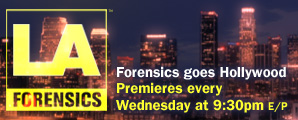LA Forensics: The Sandwich Shop Murders
An Arrest
On June 11, the LA Times announced that a former employee of the sandwich shop, James Robinson, had been arrested in the double homicide. Among the factors pointing to his guilt was that he had used a wad of cash to rent a Northridge apartment less than a day after the shooting. He'd pulled it from his fanny pack to pay the landlady but she told him to get a money order. She offered this information to the police.

Robinson had once worked at the shop but lost his job there in October, after only a few months, on suspicion that he had stolen $200. Before that, he'd been a student at California State University Northridge but had failed to pay his dorm and tuition fees with the financial aid he'd received, so he'd stopped attending. The paper went on to say that he was being held for arraignment in San Fernando Municipal Court.
Those who had worked with Robinson were surprised that he would have perpetrated such a horrendous crime. He always had seemed upbeat, cooperative, and friendly. In addition, he went to church and had even sung for a while in the choir.
James White had been hired after Robinson left, so it was unclear whether he had known the suspect, although his family said the two young men had briefly worked together at another place. Other sandwich shop employees said they had seen Robinson come into the shop several times after his termination.
At the time of his arrest, Robinson worked as a meat wrapper at a grocery store in Canoga Park. Even before the tip, the police were aware that he had a record for a minor infraction. He'd also been plagued by collection agencies after him for unpaid debts.
At the police station, Robinson waived his Miranda rights and agreed to talk, immediately denying he had killed anyone. He provided an alibi and said he'd been without his gun that evening because he could not find it in its usual place. He suspected his roommate had taken it the very person who had turned him in.
There were enough ambiguities from the scene to allow for this possibility. Then, when the eyewitness could not identify the shooter she had seen from a six-pack of photos, detectives knew they might face some problems, including reasonable doubt, but a specific piece of evidence would prove who was telling the truth.

